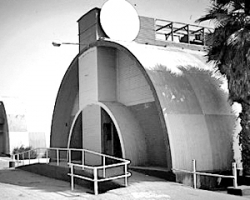The 100th anniversary of Seal Beach comes up next year, but we are already in the middle of some other significant anniversaries.
Last year marked the 100th anniversary of the actual naming of Seal Beach (changed from Bay City in August 1913), and this year marks not only the 150th anniversary of the founding of Anaheim Landing, but also the 50th anniversary of the opening of the Marina Palace, the legendary rock and roll hotspot located in the two Quonset huts on PCH just across the Long Beach line.
Throughout the mid-to-late 1960s and early 1970s, the Marina Palace hosted such headliners as Ike and Tina Turner, Alice Cooper, the Seeds, Van Morrison and almost every local band trying to get a break.
The Marina Palace was surrounded by controversy from its beginnings, not surprising since its owner was William Robertson, the most controversial and divisive figure in Seal Beach history.
Robertson was a Los Angeles police detective, overseeing the force’s hotel division. He supplemented his income by “employing” (over $100,000 worth) a number of Ballard Barron’s gambling operations in Seal Beach in the late 1930s.
Los Angeles PD investigations motivated him to abruptly resign his job in 1940. Within a couple of years, soon after Seal Beach gamblers shifted their operations to the developing Las Vegas Strip, he began operating gambling clubs in Seal Beach.
When post-World War II changes made things tough for local gambling, Robertson conceived a plan which would eliminate gambling on Main Street but establish a gambling zone on a strip of state land just north of PCH at First Street. This parcel was reclaimed from Alamitos Bay when the San Gabriel River channel was created. The gambling was limited to one operator —a “non-profit” operated by Robertson who, with Glide ‘er Inn owner Jimmy Arnerich, had also obtained a lease on the land.
Through judicious donations and free meals in the months prior to elections — and the power of publishing the town’s newspaper (he purchased Seal Beach Post & Wave in 1943), Robertson got the gambling zone and his Airport Club approved by the city council. But it led to a backlash and a four year campaign which in 1953 led to the banning of gambling in town.
Robertson tried multiple times to revive gambling, but to no avail. By 1961 he was using the Airport Club site as a boat sales operation.
Beginning in January 1962 he tried to turn his Quonset huts into a dance hall. Surf guitarist Dick Dale (probably acting as a front) applied for a permit to operate “the proposed Marina Palace” as a dance hall but was denied, in part because of protests from the town PTA and the Baptist Church whose spokesperson Mrs. Stanley Olson said the dance hall would be of no positive benefit economically and would attract an undesirable element. Finally Robertson leased the building to the American Legion who did obtain a dancing permit. When the Legion could not make a go of it, Robertson took over the grandfathered permit in early 1964, and began booking rock and roll acts in the building.
His son, Bob Robertson, stated that at one point there were plans for the Quonset huts to become the first of the Cinnamon Cinder clubs run by KRLA radio disc Jockey Bob Eubanks, who in his pre-Newlywed Game days was a top Los Angeles radio personality and the man who brought the Beatles concerts to Hollywood Bowl in LA.
To be continued in Part 2…
Larry Strawther, the author of Seal Beach: A Brief History, likes local history. His email is larrystrawther@gmail.com and his book and other articles are available at www.historysb.com.





